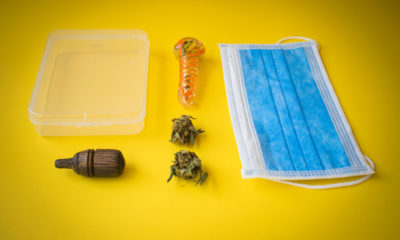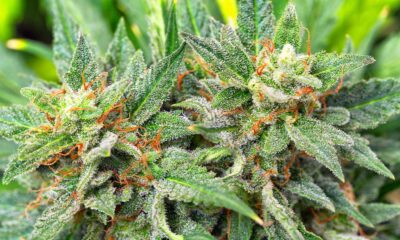
Joint Opinions
Don’t Look to the Feds For Progressive Answers on Opioids
Trump administration is out of step with current data on opioids and cannabis.
In a pronouncement issued Wednesday, the Trump Administration’s Opioid Commission has ignored the voluminous research finding that states with medical marijuana availability have fewer opiate-related overdoses, hospitalizations, and traffic accidents, as well as less opiate use and abuse than do states without medical marijuana laws.
Instead, in a letter to Trump, commission chair and New Jersey Gov. Chris Christie harkens to a single study using decades-old data. “Recent research out of the NIH’s National Institute on Drug Abuse found that marijuana use led to a 2 ½ times greater chance that the marijuana user would become an opioid user and abuser,” the letter states. “The Commission found this very disturbing.”
The cited study looked at participants who admitted to marijuana use between 2001-2002, and judged their misuse of street or prescription opiates in 2004-2005, via the National Epidemiologic Survey on Alcohol and Related Conditions (NESARC). The study’s lead author Dr. Mark Olfson wrote in an email, “These are the only years in which the longitudinal surveys were collected. I, too, wish we had more recent data.”
The researchers noted that, “the great majority of adults who used cannabis did not go on to initiate or increase their nonmedical opioid use” and that the researchers were unable to distinguish recreational from medical use in the study.
Cal NORML’s director Dale Gieringer published a patient population report in May 2002, which found that 0.01 percent or fewer residents of then-legal medical-marijuana states used marijuana medicinally. “Since then, medical usage has soared by a magnitude of 30 or more,” said Gieringer, adding, “The efficacy of medical cannabis for pain was barely known in 2001-2; much less known was its utility as an opioid substitute.”
So, rather than studying patients using marijuana for medicine, the study the Commission based its findings on looked at a decades-old population willing to use an illegal drug, and moreover, admit to it (with no laboratory confirmation).
Cal NORML is now conducting a survey of medical marijuana patients in California. In early results, 17-25 percent of respondents report that they must increase their use of prescription drugs when they are unable to use cannabis, either because of drug testing at their jobs or by their doctors. One respondent said he had to double his opioid dose; others went back on Norco, Oxycontin, Vicodin or large doses of NSAIDS (e.g. 600 mg of Ibuprofen). Anxiety and sleep meds (Klonopin, Prozac, Seroquel) were also mentioned.
One of the authors of the study cited by Christie, Dr. Carlos Blanco, owns stock in Eli Lilly, the manufacturer of Prozac. Blanco leads NIDA’s Division of Epidemiology, Services, and Prevention Research at NIH.
NIDA has been notorious for funding only studies looking for harmful effects of marijuana, but even their website now states, “medical marijuana products may have a role in reducing the use of opioids needed to control pain.”
The LA Times has editorialized in favor of studying the potential of cannabis to stem the opiate crisis. California Congressman Lou Correa has introduced a resolution calling for the VA to “conduct a clinical study comparing the effectiveness of cannabis in treating chronic pain in veterans to help stop the opioid crisis,” and Democratic members of the House Committee on Veteran Affairs sent a letter to VA Secretary Shulkin in support.
It seems, as with medical marijuana in general, the states will have to take the lead towards more progressive solutions to the spiraling opiate abuse problem. Since a court has ruled that New Jersey must take a closer look at marijuana’s health benefits, it seems Gov. Christie will be forced to take a closer look at this topic.
TELL US, have you used cannabis for pain?


























